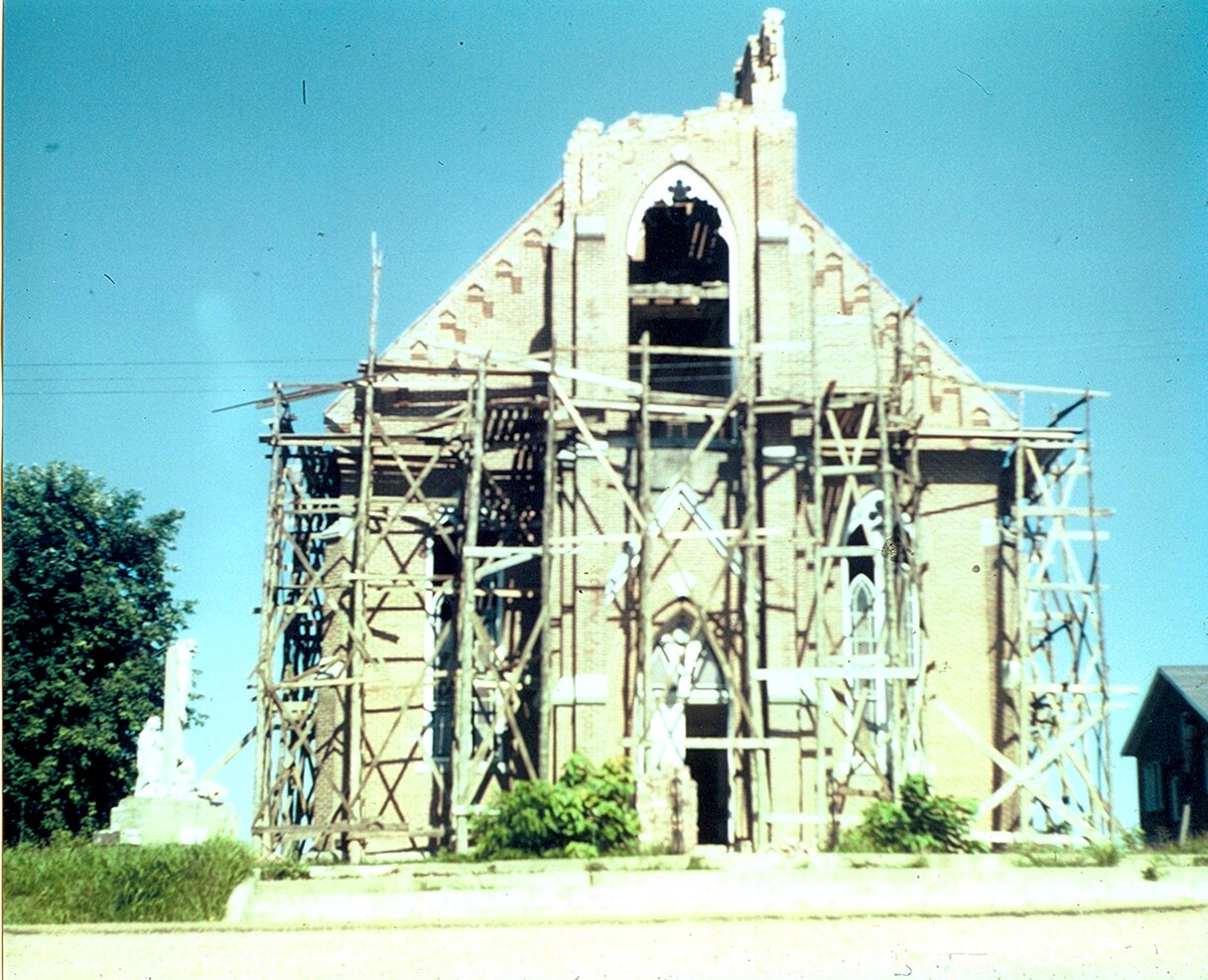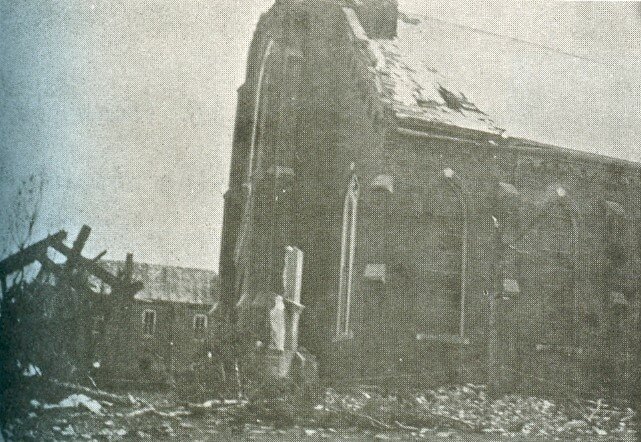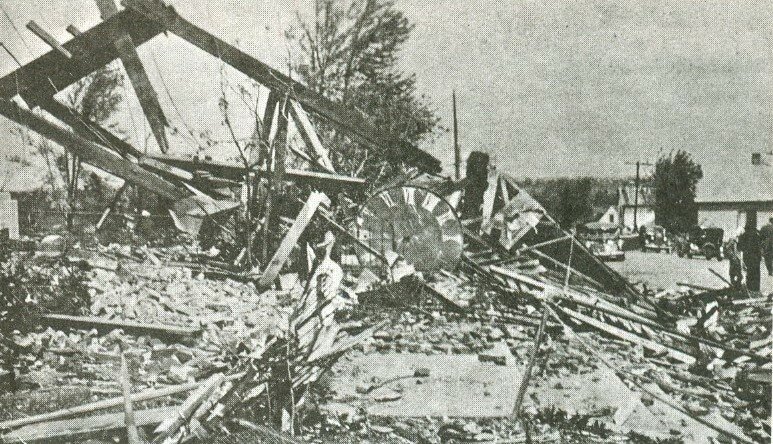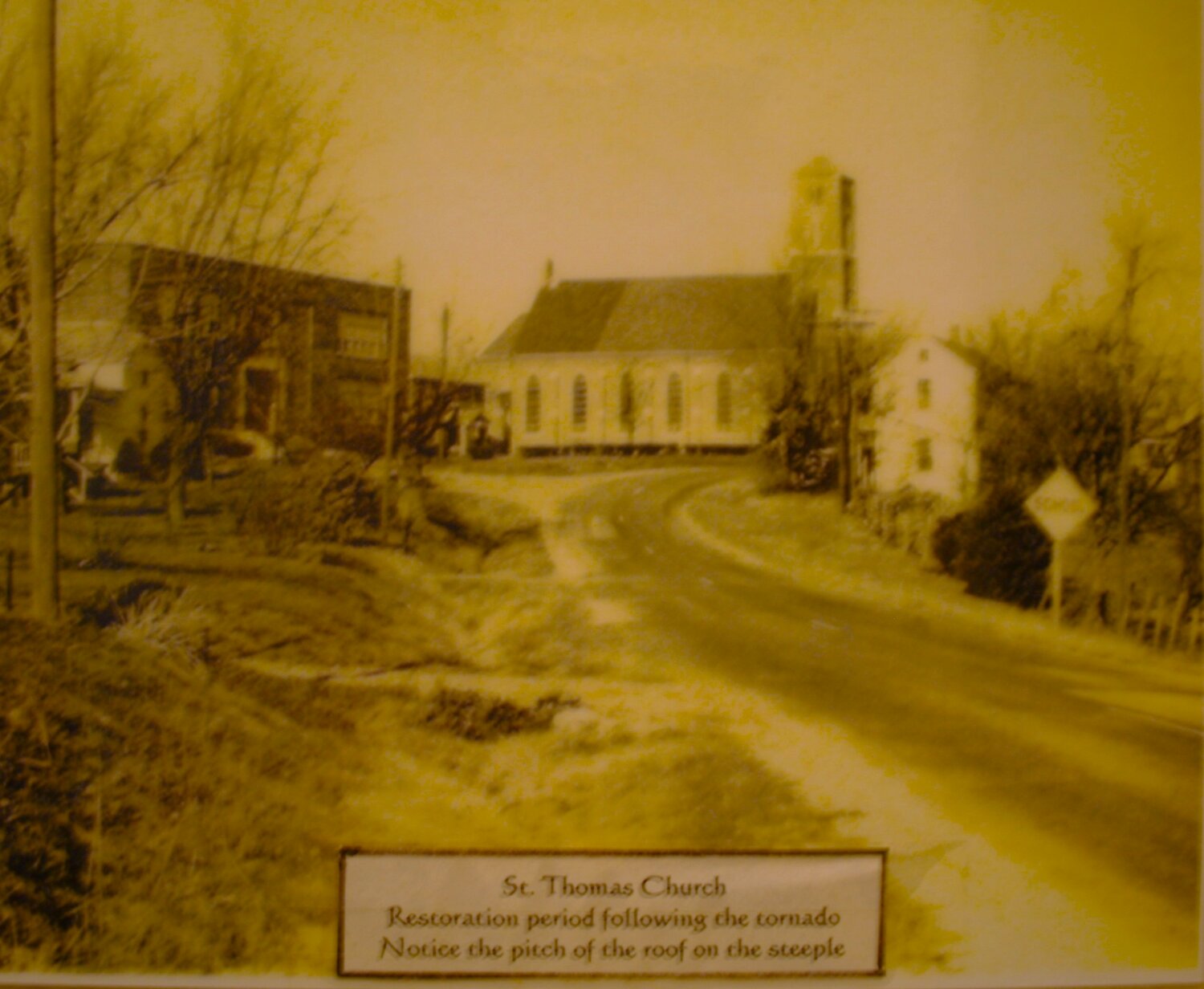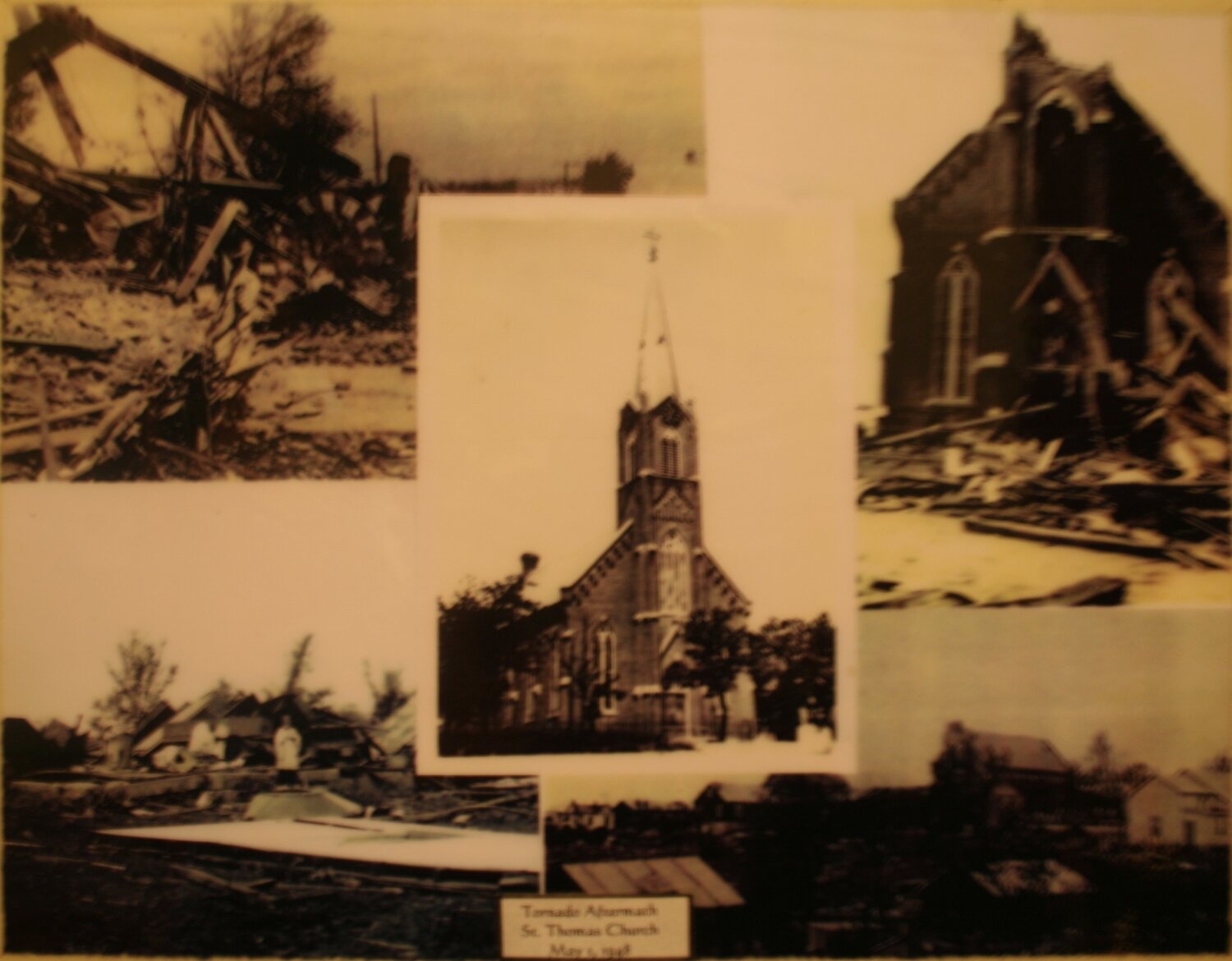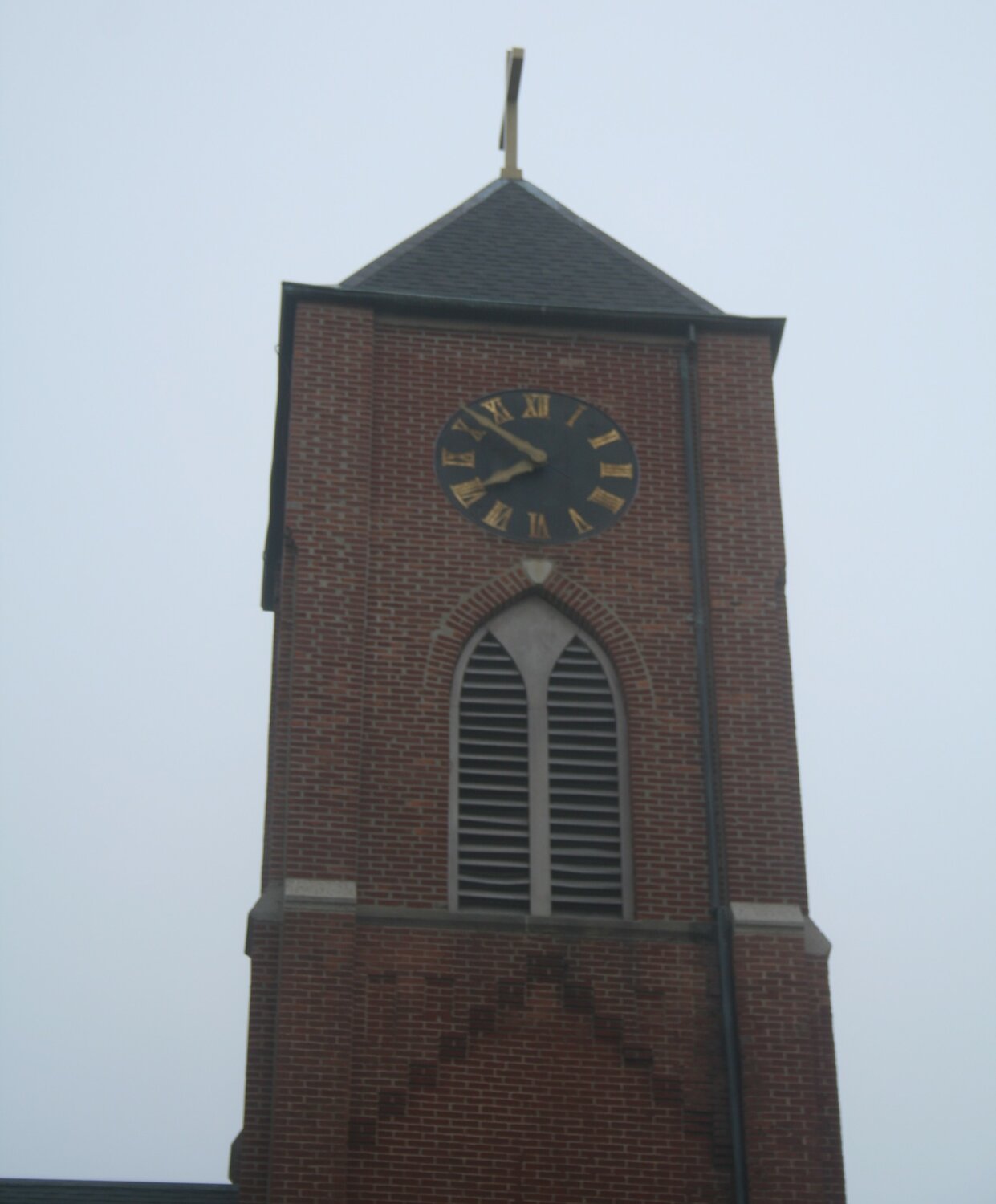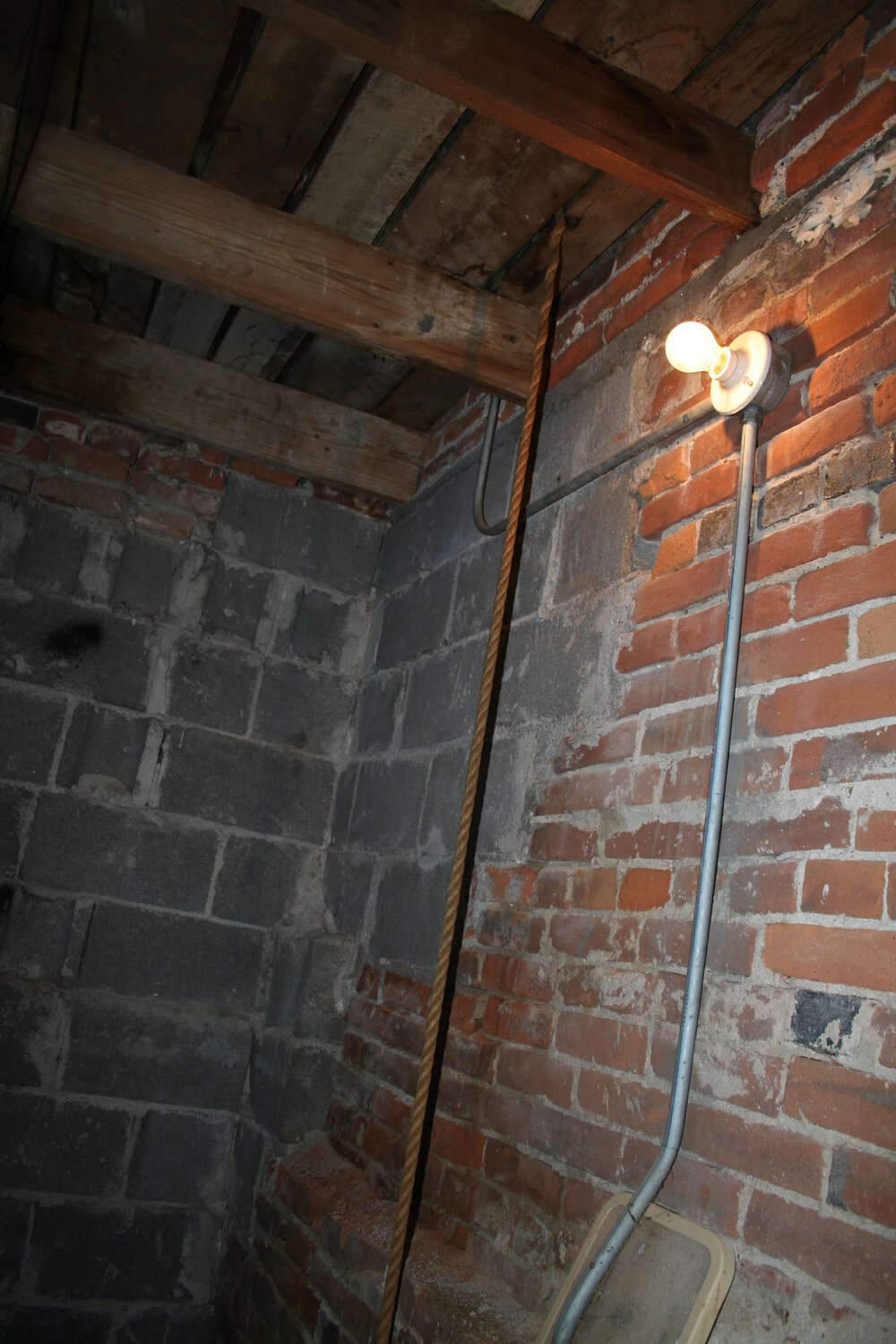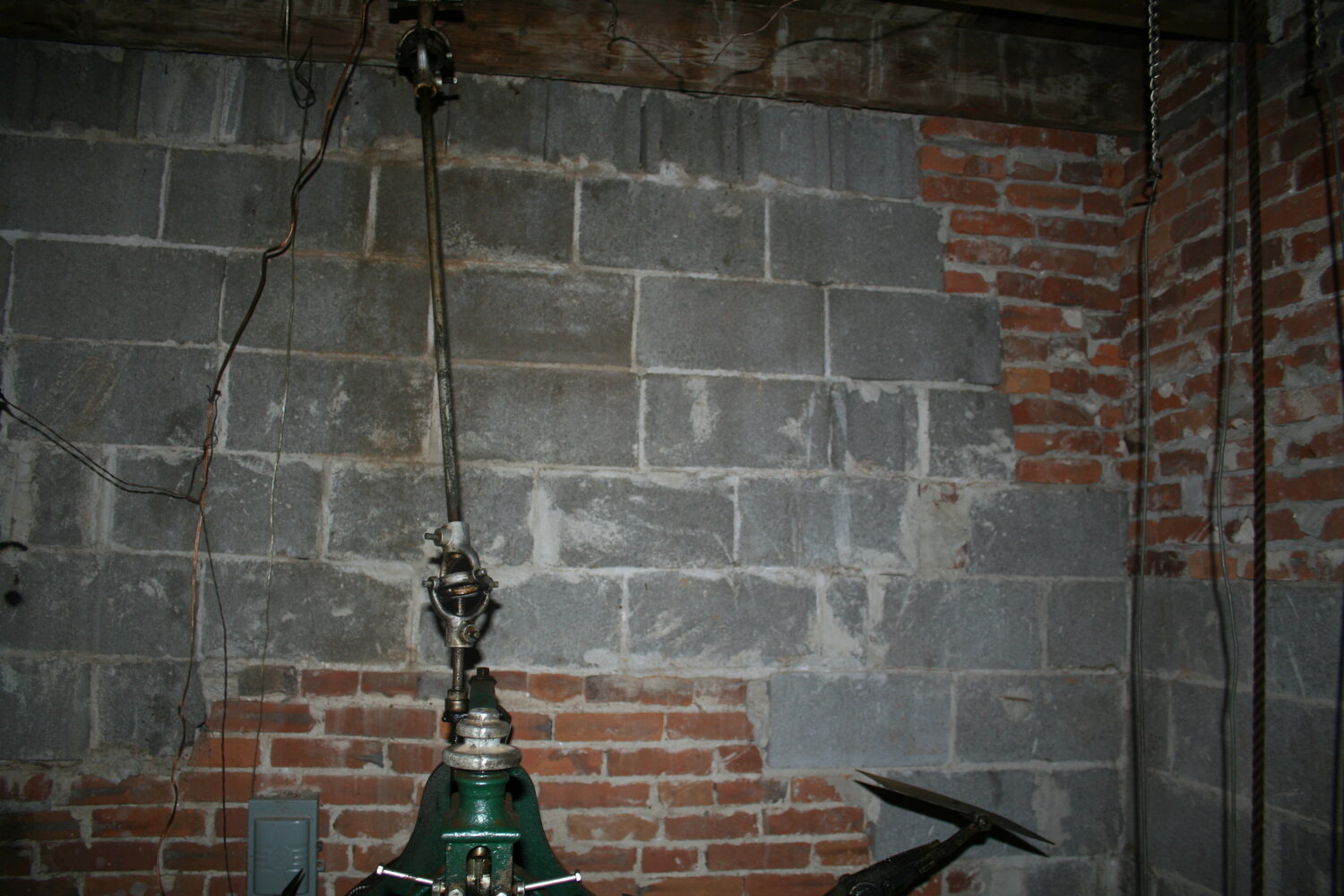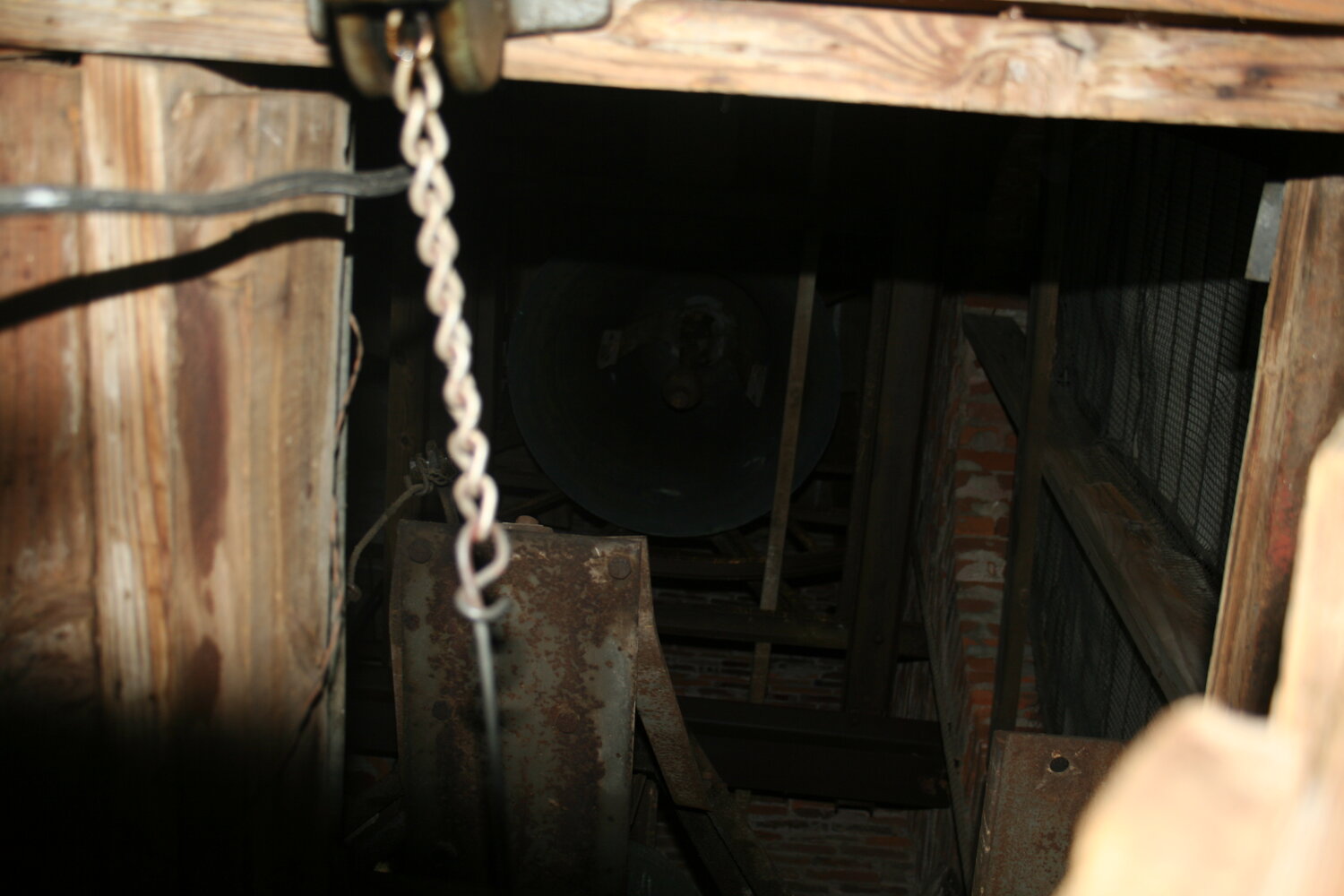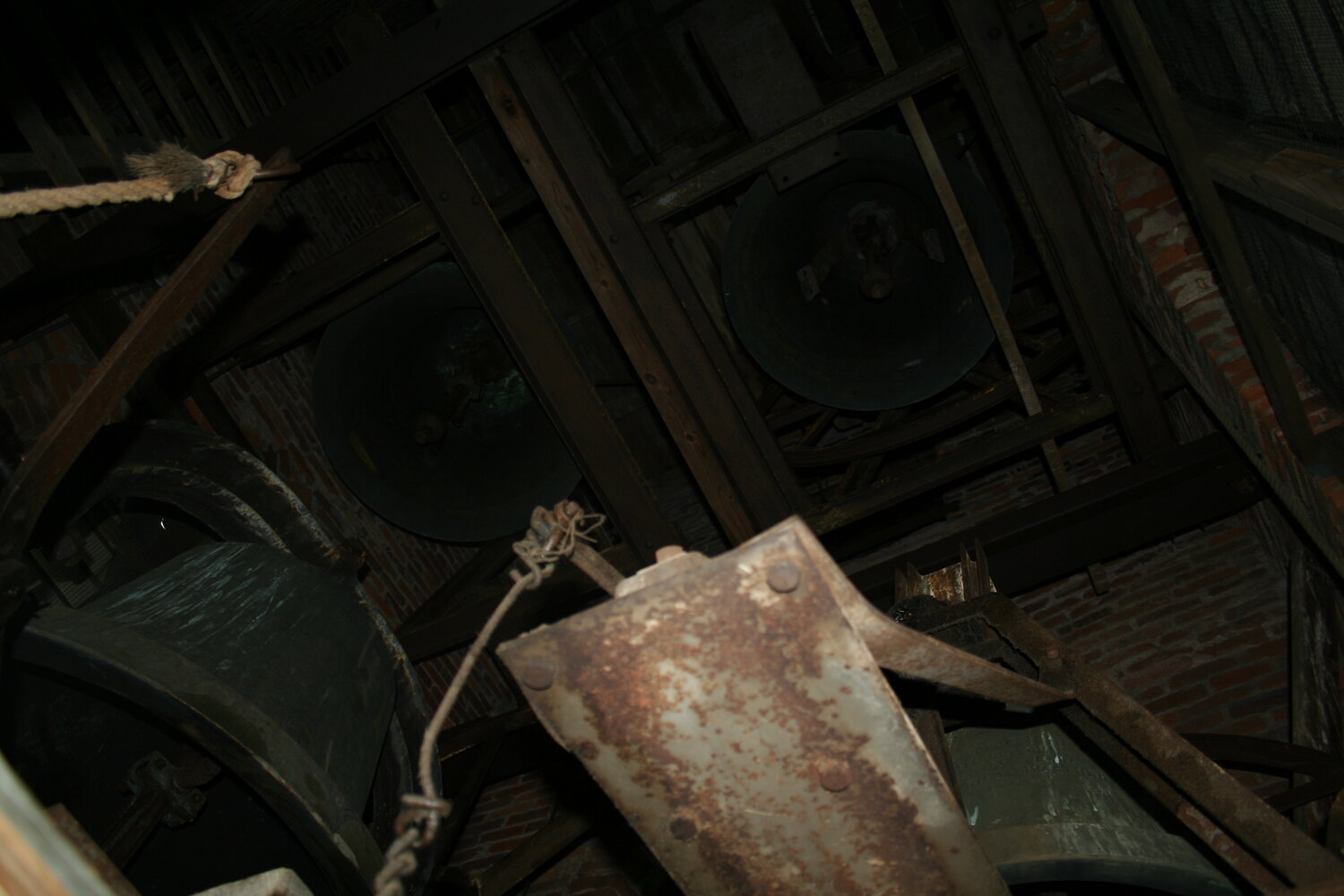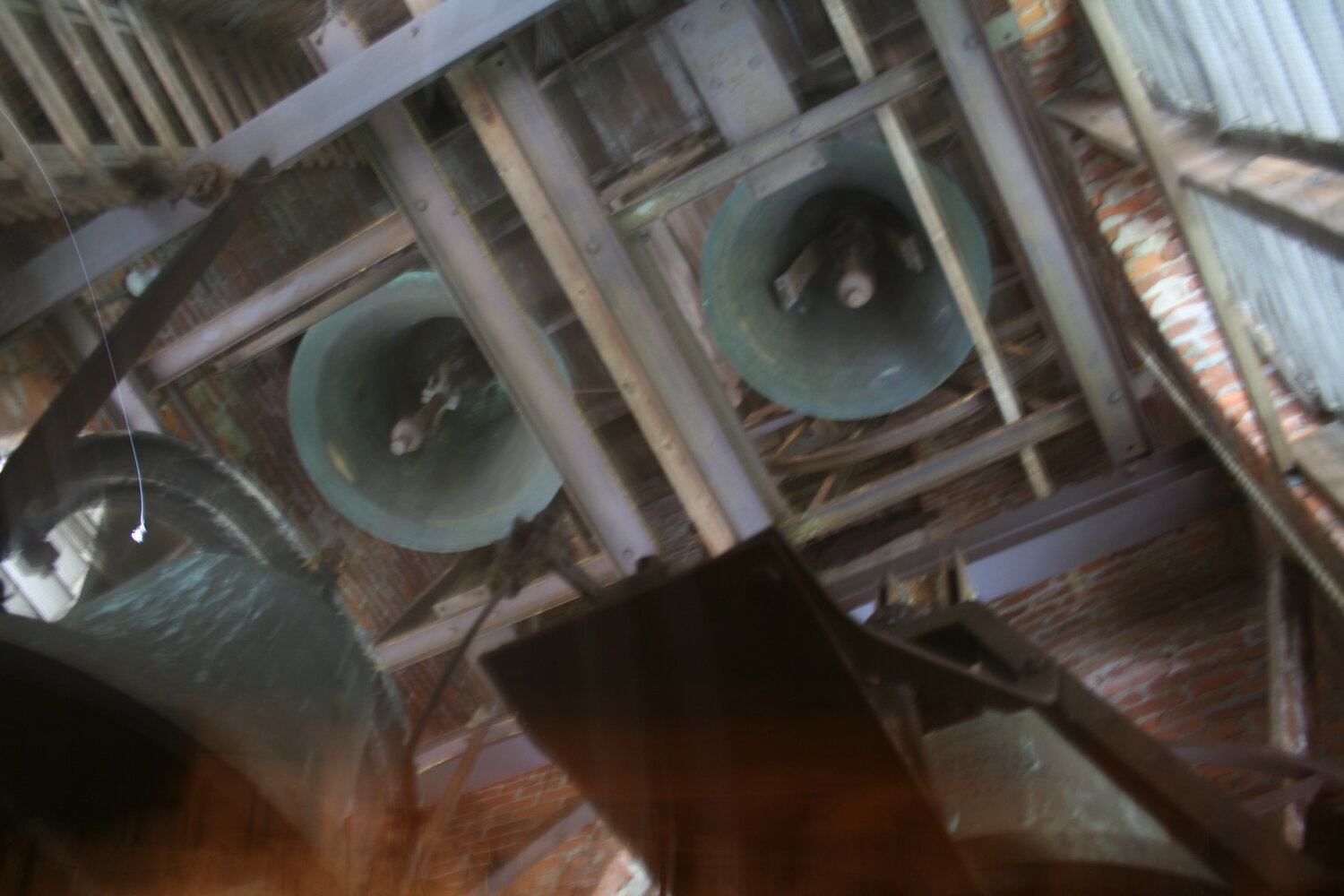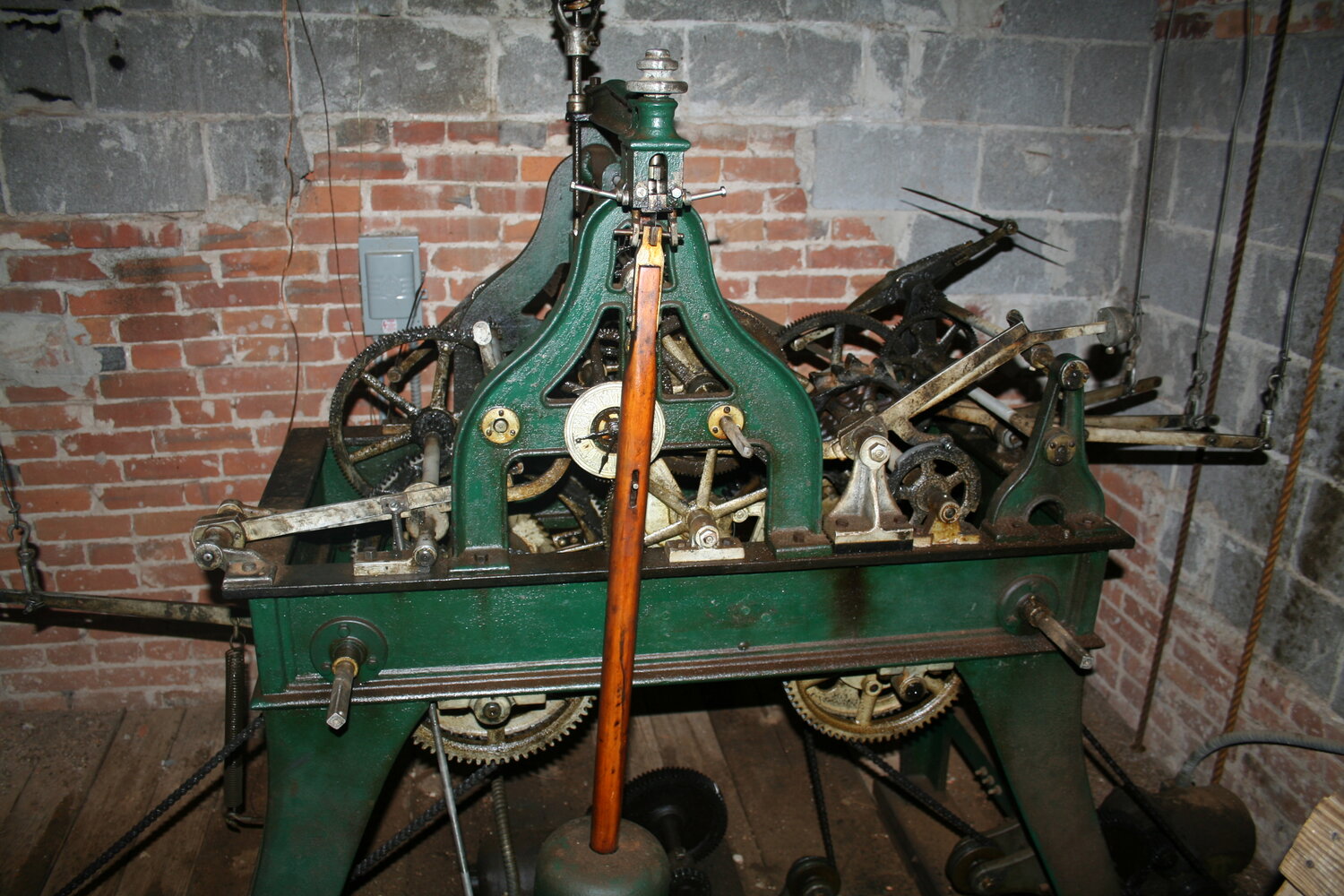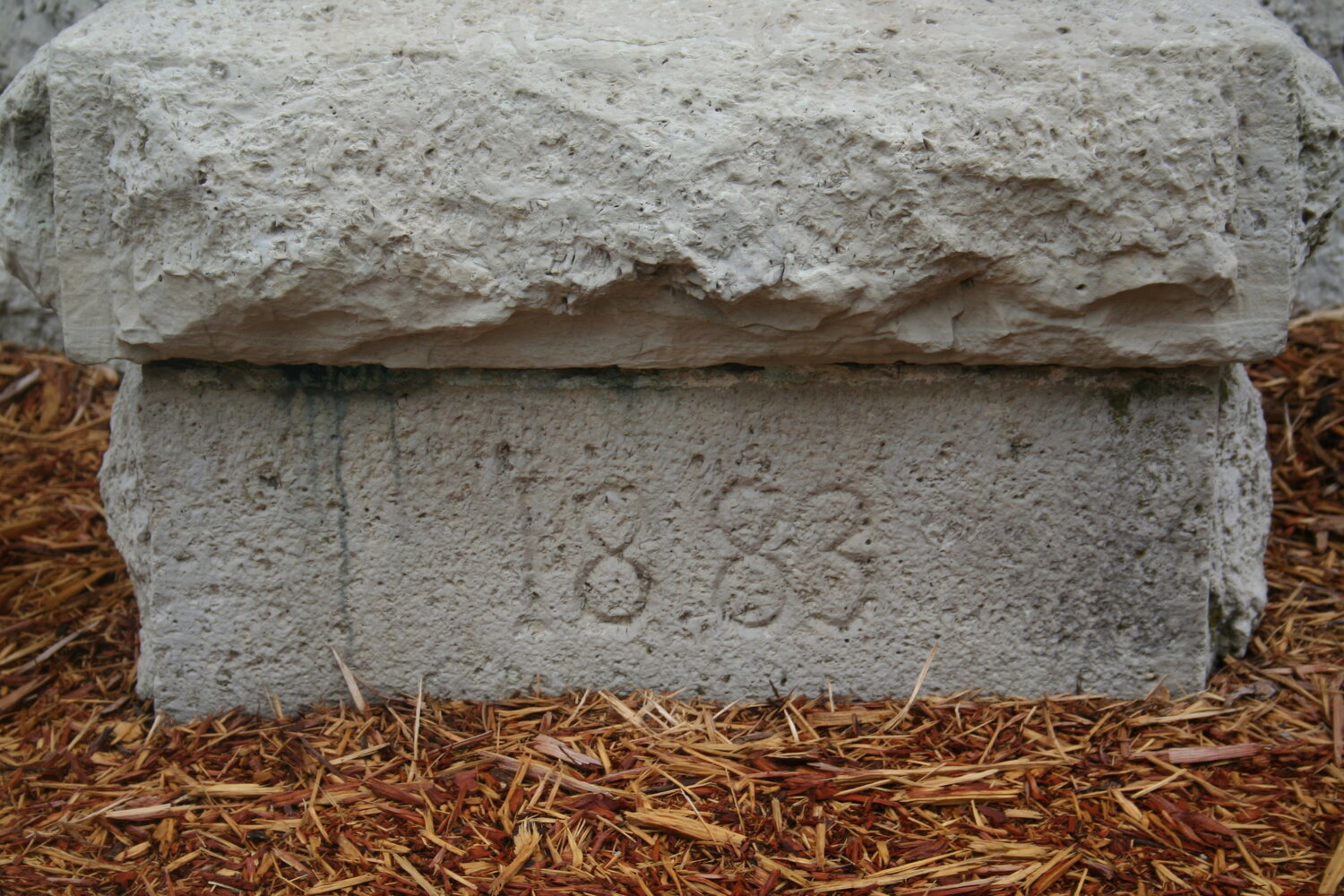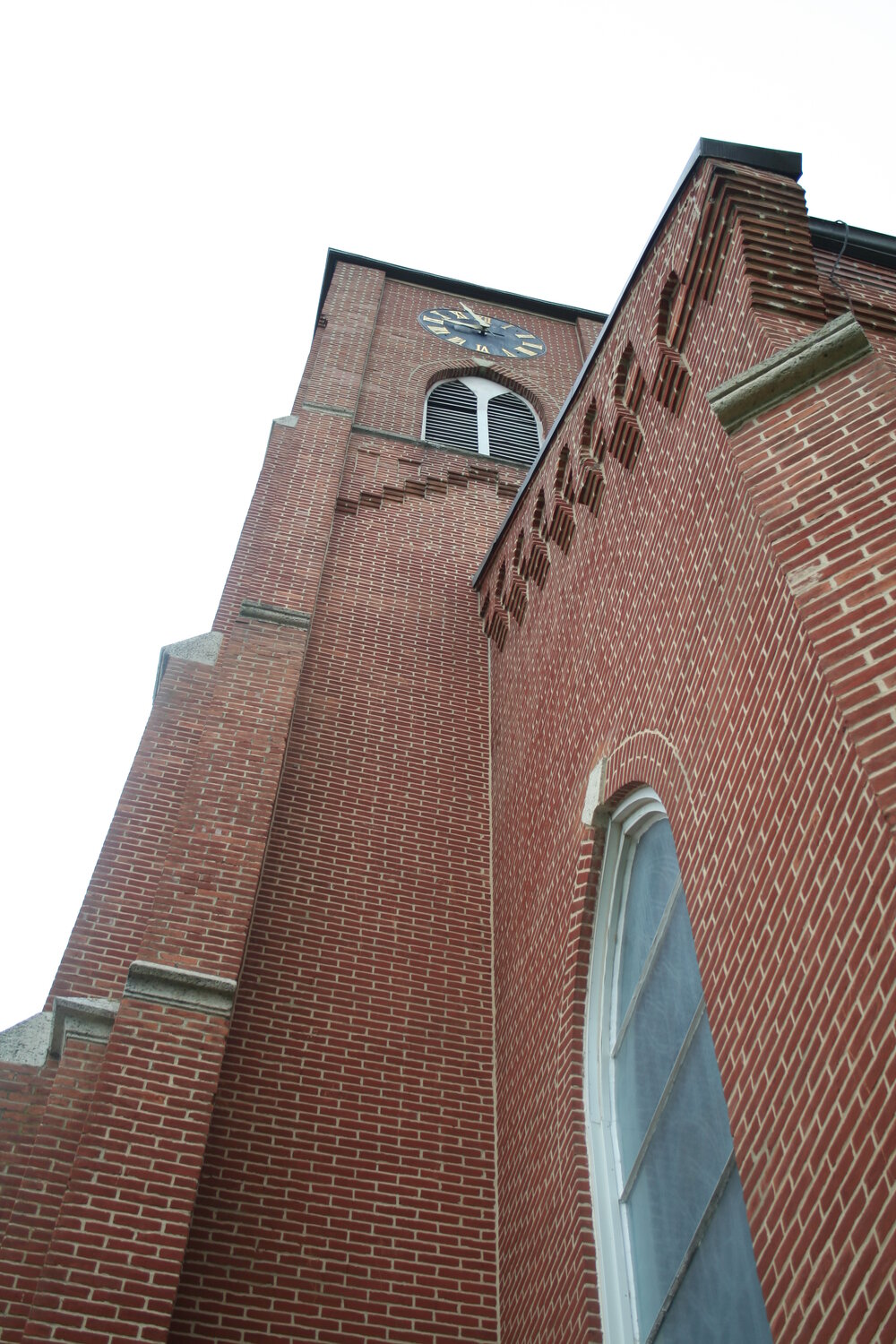75th ANNIVERSARY ENCORE: St. Thomas the Apostle parishioners went to Mass in damaged church after tornado

SCROLL THE ARROWS to see more photos.
The following article, originally published in the June 27, 2008, edition of The Catholic Missourian, marked the 60th anniversary of the tornado:
The Our Lady of Perpetual Help devotions had just let out when the wind and rain started getting heavy.
Within a half-hour, the sturdy, 1883-vintage steeple of St. Thomas the Apostle Church was a tangle of rubble in the courtyard and on Highway B. The rectory, convent and old school were in ruins. About 45 of the 65 houses in town were damaged or destroyed.
For the first time in decades, no bells summoned the faithful to Sunday worship the next morning. They were buried in tons of bricks and splintered wood on the church steps.
The people came anyway.
On May 2, 1948, parishioners scaled mud and debris to take part in the source and summit of their lives: The Holy Sacrifice of the Mass.
“We talked things over and sang ‘Holy God, We Praise Thy Name,’” the pastor, Father Arthur G. Behrman told reporters from the Jefferson City Daily Tribune.
“Tell everybody we’re down but not out,” he stated.
No one was killed, and only one person received injuries serious enough to warrant a trip to the hospital. But 60 years later, people still remember that day with startling clarity.
“I was very, very afraid for a long, long time ― every time it started to storm,” parishioner Marilyn (Strope) Herigon, who was living with her family in a house not far from the church when the tornado hit, recently recalled. All the windows in her family’s house were blown out.
“That Sunday, we were going to have graduation in the school hall,” recalled parishioner Norma Schmidt Lueckenhoff Uhlmann, who was in St. Thomas with her father when the tornado hit. “My younger sister and all of them had caps and gowns hanging in there waiting for them. And after the tornado, they found some of the caps and gowns in the trees in Folk [Mo.]!”
Her father went to the convent, of which the top story had been ripped to shreds, and found the sisters huddled under a bed, terrified.
“We came to church the next morning and looked up and oh! The steeple wasn’t there! Just the sky!” she said. “But we still had Mass. Everybody had great faith. The Lord sometimes gives you some extra strength and grace.”
Marie Luebbering, who was with her family at home north of town, caught sight of the church property the next morning on the way to Mass.
“We were stuffing towels under the doors and windows to keep the rain out at the house, but we had no idea that a tornado had touched down,” she said.
“We were right in the middle of it,” said Mrs. Herigon.
Her dad took her and her sister in the cellar of their home while their mother stayed upstairs.
“He went back up for Mom and before he even hit the top of the cellar steps, you could hear glass shattering,” said Mrs. Herigon. “It sounded like a train was coming right in front of the house. We stayed down there until it got quiet.”
Her father went upstairs, looked out of one of the broken windows and said, “The church is gone.”
Actually, the main part of the church only had some holes in the roof. The windows weren’t even broken. But the towering spire - the tallest structure for many miles ― had disappeared.
“No one could get through Route B,” she said. “The clock and the bells were in the road. The faces of the clocks were in the highway.”
The Jefferson City newspaper printed pictures of the destruction, including one of Delores (Schaefer) Stockman exiting the church after Mass through a windowpane in a ruined walkway to the rectory. The front entrance to the church was blocked by debris.
One World War II veteran told a Daily Tribune reporter the damage looked like a town in Italy after it had been bombed.
Emergency workers and curiosity seekers kept Veit’s Ferry over the Osage River busy all night and all day. Thousands of people came to see the destruction nature had wrought.
“The people kept coming and coming and coming to look,” said Mrs. Herigon. “It was awful.”
After Mass, Fr. Behrman, whose watch was eventually found near a creek five miles from the rectory, sent the families home to eat breakfast, then invited them back to plan the restoration of the church grounds.
“We need men, money and material to start rebuilding as rapidly as possible,” he said.
The 1903 school was wrecked beyond repair, but nearby, its yet-to-be-completed replacement had minimal damage. Sunday Mass would be held for weeks in the basement of the new school. Meanwhile, the Knights of Columbus Hall served as a temporary school.
A week after the tornado, the entire Jefferson City Street Department joined volunteers from neighboring towns to help clean up the debris. Fr. Behrman quickly took charge of the operation, the Daily Tribune reported.
“He took off his coat, rolled up his sleeves and worked until the sweat was rolling off,” the Jefferson City Chamber of Commerce secretary stated.
The bell tower was reconstructed with remarkable precision. Today, it’s hard to tell from outside where the 1880s work leaves off and the 1940s work begins. Inside, the place where concrete blocks meet brick marks the transition. A truncated roof was built in the place of the lofty steeple.
All four bells now toll the hours, just as they did before the tornado, using the same clock faces and pendulum-driven clockwork installed in the 1920s.
“In the final analysis, the tornado dealt the community such a crushing blow that many lesser communities would have just simply given up,” wrote Daniel A. Schmidt in a book titled, The Heritage of St. Thomas: Community, City, Parish, published in 1974. “However, the residents of this community banded together in a cooperative effort that in just one year hence would see the community and parish buildings completely restored or rebuilt. In spite of its devastation, the tornado brought about a new spirit and persistence against adversity among the people of the community, both collectively and individually.
“It took a long, long time for things to get back to normal,” said Mrs. Herigon. “But the people here were very proud of their church. The faith in this community was just unbelievable.”
“It is a moment in the history of this community and an event that will never be forgotten as long as people continue to live here,” wrote Mr. Schmidt.
“Now, when I hear about the tornados that happen today, I feel particularly sorry for all the victims and pray for them,” said Mrs. Uhlmann.
Comments
Other items that may interest you
Services
The Catholic
Missourian
2207 W. Main St.
Jefferson City MO 65109-0914
(573) 635-9127
editor@diojeffcity.org

